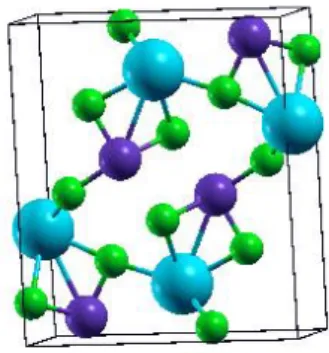HAL Id: cea-02346356
https://hal-cea.archives-ouvertes.fr/cea-02346356
Submitted on 5 Nov 2019HAL is a multi-disciplinary open access archive for the deposit and dissemination of sci-entific research documents, whether they are pub-lished or not. The documents may come from teaching and research institutions in France or abroad, or from public or private research centers.
L’archive ouverte pluridisciplinaire HAL, est destinée au dépôt et à la diffusion de documents scientifiques de niveau recherche, publiés ou non, émanant des établissements d’enseignement et de recherche français ou étrangers, des laboratoires publics ou privés.
Elucidating Methylamonium and Cesium based Hybrid
Perovskites’ Dielectric Properties using Ab Initio
Calculations and Ellipsometry Measurements
Arthur Marronnier, Heejae Lee, Denis Tondelier, Bernard Geffroy, Jean-Eric
Bourée, Guido Roma, Yvan Bonnassieux
To cite this version:
Arthur Marronnier, Heejae Lee, Denis Tondelier, Bernard Geffroy, Jean-Eric Bourée, et al.. Eluci-dating Methylamonium and Cesium based Hybrid Perovskites’ Dielectric Properties using Ab Initio Calculations and Ellipsometry Measurements. 2èmes Journées Pérovskites Hybrides (JPH2016), May 2016, Rennes, France. �cea-02346356�
Elucidating Methylamonium and Cesium based Hybrid Perovskites’ Dielectric Properties using
Ab Initio Calculations and Ellipsometry Measurements
Arthur Marronnier1, Heejae Lee1, Denis Tondelier1, Bernard Geffroy1,2, Jean-Éric Bourée1,
Guido Roma3 and Yvan Bonnassieux1
1LPICM, CNRS, École Polytechnique, Université Paris-Saclay, 91128 Palaiseau, France 2LICSEN, NIMBE, CEA, CNRS, Université Paris-Saclay, 91191 Gif Sur Yvette, France 3CEA, DEN, Service de Recherche de Métallurgie Physique, Université Paris-Saclay, 91191 Gif Sur
Yvette, France
arthur.marronnier@polytechnique.edu
Methylamonium lead halide perovskite materials have emerged over the past five years as absorber layers for new high efficiency yet low cost solar cells that combine the advantages of organic and inorganic semiconductors. Similar to inorganic semiconductors, hybrid perovskites (mostly CH3NH3PbI3
and more recently cesium-based) have shown low exciton binding energies1 (≈ 5-30 meV) indicating a
potentially high value (≈ 70) at low frequencies for their relative dielectric constant. Others studies have even found giant values (≈ 1000 in the dark) for the dielectric constant2 at very low frequencies (<1 Hz).
Understanding the excitons’ physics in these materials is crucial in order to increase the charge extraction and improve the solar cells’ efficiency.
Here, we study the phonon modes and dielectric properties of both methylamonium
(CH3NH3PbI3) and cesium (CsPbI3) lead iodide perovskite structures using DFT (Density Functional Theory)
calculations. Phonon frequencies for both the cubic (T>600K) and orthorhombic (T<530K) phases of CsPbI3 are derived using the linear response approach (DFPT). As for the orthorhombic phase (figure 1), we find that CsPbI3 shows a very flat energy profile around its equilibrium structure (figure 2). We derive
the dielectric matrix in the high frequency regime (> 1 THz) from the linear response and aim to extract the low frequency dielectric constant from the phonon frequency splitting between normal and
longitudinal modes. The results are expected to determine the possibility of a giant dielectric constant for these hybrid perovskites. The dielectric properties obtained for CH3NH3PbI3 are being compared to
ellipsometry measurements performed in collaboration with Horiba Jobin Yvon company.
Figure 1: Equilibrium energy of CsPbI3’s orthorhombic
phase (T<530K) for 7 sets of atomic positions
obtained by DFT. The 5 intermediate position sets are linearly interpolated between sets 1 (Moeller) and 7 (Trots) which are equilibrium positions relaxed from experimental data3,4. The very flat profile indicates
potentially low values for acoustic phonon modes.
Figure 2: Equilibrium structure of CsPbI3 in its
orthorhombic phase for position set 5. The atomic positions are relaxed, and the blue, purple and green atoms respectively denote Cs, Pb and I.
References
[1] Miyata et al. Nature Physics, 2015, 11, 582–587. [2] E. J. Juarez-Perez et al. J. Phys. Chem. Lett., 2014, 5 (13).
[3] D.M. Trots et al. Journal of Physics and Chemistry of Solids, Elsevier, 2009, 69 (10). [4] Moeller et al. Mat. Fys. Medd. Dan. Vid. Selsk, 1959, 32, no.1.
